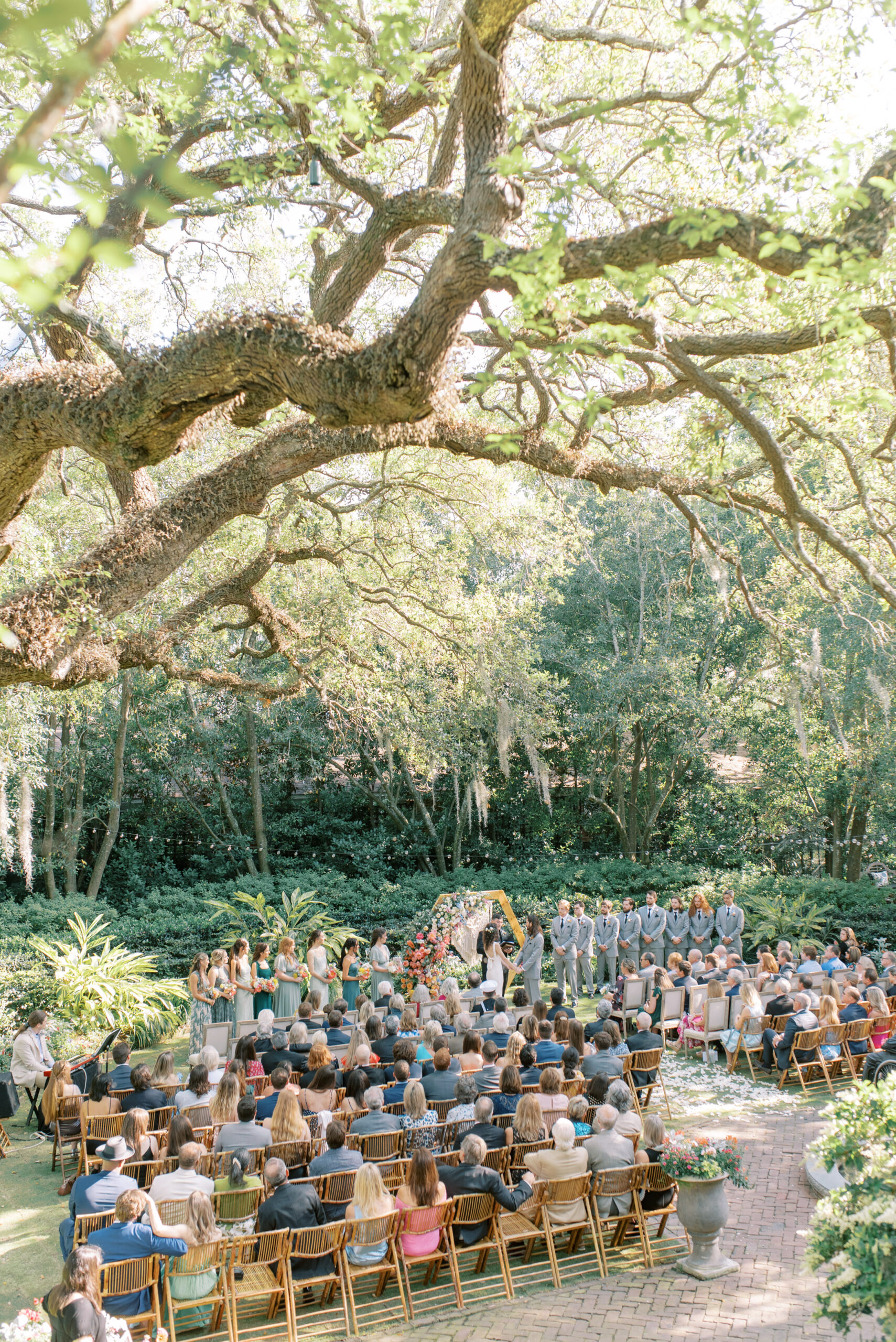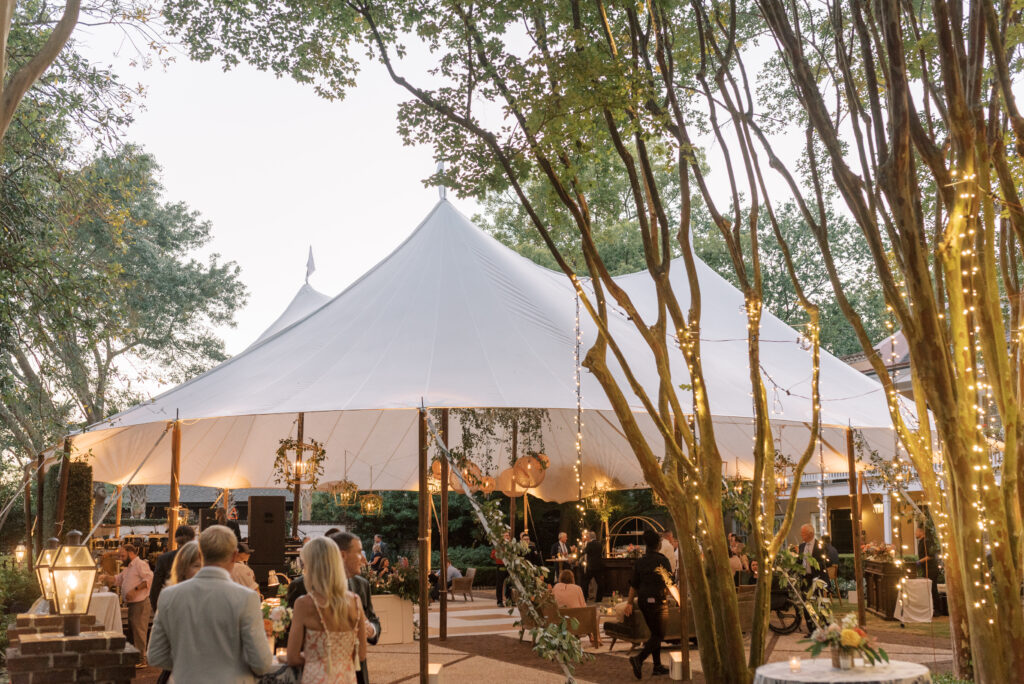
Your Ultimate Guide to Creating a Stress-Free Wedding Day Timeline

Planning a wedding is exciting, but can be overwhelming. One key aspect of ensuring a successful and stress-free wedding day is to create a well-structured timeline. A thoughtfully organized timeline will help the day stay on track, ensure that everything runs smoothly, and allow you to relax and enjoy your special day to the fullest. Timelines are one of those “surprise” things most couples probably don’t think of until someone asks about them, so I wanted to take a few minutes to talk about them.
1. The Importance of a Well-Planned Wedding Day Timeline
Planning your wedding day timeline is like creating a roadmap for your celebration. It ensures that every event and moment is given the appropriate time and attention, allowing you to fully savor each experience. A well-structured timeline helps keep everything on track, minimizes stress, and allows for a more relaxed and enjoyable celebration. Without a timeline the day is confusing and stressful, so it’s imperative to have one in place.

2. Setting the Foundation: Start Early and Communicate
Your wedding planner will begin planning your wedding day timeline as early as possible. The timeline determines when vendors arrive, how much coverage you need to plan (ie. how many hours of photography or videography), and when your loved-ones and guests need to be where.
You’ll likely start discussing your timeline at your first meeting, so make sure and think about the things that matter most to you (see below) so you can set clear expectations for your day.
3. Determining Key Milestones: Ceremony, Reception, and Sunset
Identify the key milestones of your wedding day, such as the ceremony, reception, first dance, cake cutting, and other special moments. These events will serve as anchor points for creating the timeline. Another extremely important (but often forgotten) time to consider is sunset. Summer weddings often don’t need to worry about the sunset time, but if you’re getting married in the fall or winter you’ll definitely want to know what time the light runs out so you can plan accordingly.

4. Should We Have a First Look? What Does That Mean For The Timeline?
This is a big question, and one we won’t go super deep into here (I think I’ll write a more in-depth blog about this another time). The quick answer is this is COMPLETELY up to you, but since we’re talking about timelines here are a couple of points to consider:
- If your wedding is in the fall/winter you’ll definitely want to consider a first look, unless you’re having a very early ceremony. A first look will allow you to take all of your portraits BEFORE your ceremony, so afterward you can go right to reception and not be racing the sunset.
- Do you want to join the party asap? Some couples want to be part of their cocktail hour, not be taking that time for photos. If this is how you feel then consider a first look. If you have a first look then you’ll likely only have a couple of photos (the larger family groups) to take post-ceremony, which means you can jump right in to your party.
5. Allotting Enough Time for Preparations: Hair, Makeup, and Getting Ready
Allocate ample time for hair and makeup sessions, considering the number of people getting ready. It’s crucial to start early to avoid any delays. Often when a timeline gets off-track it starts during getting ready (not necessarily anyone’s “fault”). Inevitably someone will be running late, someone will need to steam their dress last minute, or forget to pee until it’s time to go.
Factor in more time than you think for each step: Does your dress have buttons? Those take longer than a zipper. Are you and your wedding party wearing bowties or ties? If so, do you know how to tie them? This ALWAYS takes longer than expected, since usually it involves watching a video tutorial or finding someone to help everyone else!
6. Managing Transitions: Transportation and Venue Changes
If you’re moving between different venues for various events, you’ll need to factor in travel time and plan transportation accordingly. Again, plan more time than you think for this step. There may be traffic along the route, plus inevitably someone isn’t ready so if you’re already running on a tight schedule it can be stressful. If the drive takes 15 minutes then I suggest allotting 30, this way you’ve got time for loading and unloading, plus traffic, etc.
7. How Much Time To Plan For Photos
This is something that your planner and photographer will both help you with, but often couples see the amount of time allotted for photos on their timeline and worry that they’ll be standing around dressed for way too long. (spoiler, this is never the case)
I’ve photographed hundreds of weddings at this point so I can PROMISE you you’ll want to believe your photographer when they suggest a specific amount of time for photos (especially family and wedding party). During family photos I plan a minimum of 3 minutes PER photo on the list. Family photos can be a bit like herding cats, and there is inevitably someone who’s going to try and sneak away to the bar “for just a minute” that we’ll be waiting on.
When planning the timeline for photos, be open and communicate your concerns with your photography team, and then listen to their suggestions. It’s always better to have a little extra time than not enough.
8. Creating Buffer Time: Avoiding Rush and Last-Minute Stress
Incorporate buffer time between activities to account for any unexpected delays. This will help you avoid feeling rushed and allow for a more relaxed atmosphere. Embrace these moments as an opportunity to take a breath, connect with loved ones, and fully immerse yourself in the joy of the day.
Wedding days are whirlwinds regardless of the timeline, so if you’re intentional about leaving blank space in your day you’ll be so glad you did. It’s time to be savored, it’ll be over before you know it.

9. Embracing Flexibility: Adaptability in Case of Schedule Changes
Weddings can sometimes encounter unforeseen delays or last-minute changes. Embrace flexibility and maintain a positive attitude. Having a well-structured timeline will help you navigate any adjustments smoothly, ensuring a seamless celebration. Your wedding team (planner, photographers, etc.) are used to last minute changes and will know how to adapt, but knowing ahead of time that things may need to shift will help you enjoy your day with less stress.
10. Wedding Party Roles: Coordination and Support
Again, your planner team will be taking point on this, but I always suggest assigning specific responsibilities to your wedding party members to assist with the smooth execution of the timeline. An example of this is designating a “person-getter” for your family photo time. Your photographer will know you and your partner, but has never met your family and friends before, which means they don’t know who to find when pulling together the larger groups for photos. Having someone ready to help who knows your family (but probably isn’t in it, just so they’re not in the photo they’re trying to help with) will keep things moving forward.
11. The Timeline Is Ready, What Now?
Before your wedding day, make sure you’ve shared (or asked your planner to share) the timeline with all of the “important players”. Make sure your wedding party all has a copy, and also share it with any family members who need to know where to be. If you’ve done this you can sit back and relax, and know that everyone (should) know exactly where they need to be and when.

Most Common Wedding Day Timeline “Hazards”
1. Hair and Makeup Delay: Like I mentioned at the beginning of the blog, often if the timeline is going to get off-track it happens early. These processes often require more time than initially estimated, causing a ripple effect on the entire schedule. To mitigate this, it’s essential to communicate clearly with the hair and makeup artists, and ask them for a realistic timeframe. Scheduling a trial session prior to the wedding can help identify potential time constraints. Allocating extra buffer time in the timeline specifically for hair and makeup will ensure that any unforeseen issues can be addressed without causing significant disruptions to the overall flow of the day.
2. Someone in the Family or Wedding Party is Running Late: This happens at almost every wedding. Someone didn’t look at the timeline and didn’t realize that even though the ceremony is at 5, they need to be at the venue and dressed by 3 for photos. The best way to keep this from happening is to make sure every important person gets a copy (confirm that they actually looked at it) of the timeline in advance. If you’ve got a repeat offender in the family…we all have that sibling or friend who’s ALWAYS late…make sure and tell them to arrive even earlier than necessary.
3. Wardrobe Challenges or Malfunctions: We don’t ever want this to happen, but every once in awhile a dress rips, someone spills something, a veil didn’t get steamed, or someone doesn’t know how to tie a tie. If you can usually get dressed in ten minutes, plan for thirty. (Yes, I’m even talking to the guys here) On your wedding day it’s not just you who’s getting dressed, but your entire wedding party too. Someone is going to get distracted, or hungry, or behind, and end up short on time if things don’t work just as they’re supposed to. Again, it’s better to spend an extra few minutes dressed than to be rushing and behind.
4. Uncle Bob Sneaks Away to the Bar During Family Photos: Someone (or several someones) almost always go missing during family and wedding party photos. They have to use the bathroom, or they want to just grab a quick drink at the bar. If you can, impress on your loved-ones that these photos will be QUICK as long as everyone sticks around for a couple of minutes. This is the part of the day that feels most like herding cats – but if they know ahead of time to stay put until after photos things will go much smoother.
5. Sunset is Early and You Didn’t Have a First Look: If everything about your day stays on schedule then this shouldn’t be a problem, because you’ve already planned enough time with the sunset in mind. BUT, if anything gets off track (transportation was behind, the ceremony ran long, etc.) then you could run out of light, FAST. Once the sun goes down it’s gone, so if portraits are important to you it might be worth having a first look on shorter days. Better to be safe than to lose the sun and not get your wedding portraits!
To Wrap It All Up
Whew! I know that is a ton of information, but if you’ve hired a great planning team they’ll honestly have most of this covered for you! It’s important to hire great vendors, and once you do to trust them to do their jobs well. A well-planned day is a stress-free day, and your wedding day should be both well-planned and stress-free!
Happy Planning <3
